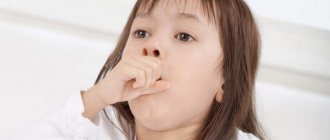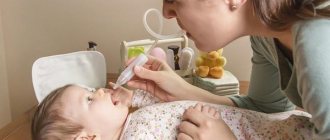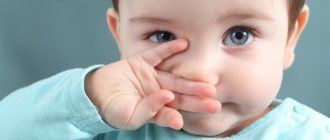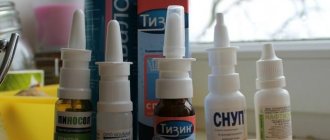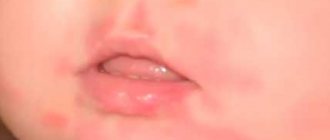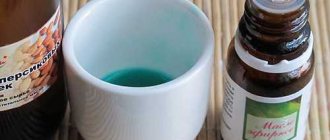Are there people on Earth who have never suffered from a cough or runny nose? Statistics show that every person gets sick 2-3 times a year, and in children, colds are a frequent visitor. If you enjoy ice cream in the summer, breathe in the winter air, and catch a virus, a child can catch the disease at any time of the year.
Resistance to diseases and the state of immunity do not depend on age or season. There is a certain algorithm of actions that should be taken when a runny nose and cough are detected in a child. A timely reaction will help avoid severe consequences and long-term treatment.
Finding the cause of a child's condition without medical education is difficult, but possible. Parents sometimes do not see the difference between influenza and ARVI, let alone more severe diseases. Cough with runny nose is a strange symptom and can be caused by different sources.
First, let's determine the source of the cough and runny nose.
ARVI ranks first among provocateurs. This is a group of diseases with similar symptoms. It spreads through airborne droplets and affects children's respiratory organs. Finding exactly the virus that caused the illness is problematic; there are more than 200 of them.
Other symptoms of ARVI besides cough and runny nose:
- sneezing;
- swelling of the mucous membranes;
- hard breath;
- muscle and headache;
- temperature;
- general weakness.
The flu adds severe headaches and a sore throat to the list. Rhinitis does not cause a high fever and does not put the child to bed, but it can be a signal for examination for measles and diphtheria. Laryngitis is characterized by a rough cough, hoarseness, the larynx becomes covered with crusts and mucus. Bronchitis provokes a deep, dry or wet cough.
Sore throat requires serious treatment; it can cause heart complications. It is identified by acute inflammation in the throat area - a white or gray coating. Pharyngitis, tracheitis, bronchiolitis, sinusitis, sinusitis and, most importantly, pneumonia, also require medical supervision.
The next pests are bacteria. Tests show the presence of a bacterial infection; it is expressed by severe pain, green snot and sputum. But yellow-green snot indicates the release of dead immune cells. A runny nose and cough can be a reaction to pollen, pet dander, and other irritants. Signs of allergies include severe lacrimation, itching in the nose and eyes.
Treatment with medications
When a pathological condition has developed due to ARVI, parents are not always in a hurry to go to the pediatrician for an appointment. Of course, a common cold can be treated at home without seeking the help of a specialist.
AVRI can easily develop into a more serious form of the disease, so it is recommended to carry out treatment under the supervision of a family doctor
If, in addition to a runny nose and cough, the child additionally has other symptoms (fever, sore throat, etc.), then it is better not to delay going to the clinic. Respiratory diseases develop rapidly, and a simple cold can quickly develop into a more severe pathology (acute tonsillitis, laryngitis, bronchitis).
Treatment of a runny nose and cough depends on the cause that provoked the development of these phenomena. Depending on this, the course of therapy and the choice of medications differs. For example, if the etiology of the disease is allergic, then children take antihistamines.
General rules for treating a child for cough and runny nose
If a child is sick for the first 3 days and no serious symptoms are detected, we will help him cope with his illness in simple ways. This is enough to overcome a common ARVI and prevent complications from a more serious illness.
We organize suitable conditions for the child:
- The optimal air temperature in the room is 18-22 degrees.
- We regularly ventilate the room.
- We do wet cleaning 2-3 times a day. We remember that viruses and bacteria like to live in dust.
- We humidify the air the child inhales with a humidifier or a simple wet towel on a radiator.
- We do not force the child to eat, but we insist on drinking plenty of any liquids: tea, fruit drinks, mineral water, compotes.
If the child feels well, we go for walks more often. We try to prevent the mucus in the nose from drying out and crusts from forming. The ideal assistant for this is a weak salt solution, which can be purchased at a pharmacy (saline) or made independently (1 teaspoon of salt per liter of water). It is absolutely harmless, it is permissible to drop 2-4 drops into each nasal passage at least an hour later.
How to treat a runny nose in a child
Children get colds 10 times more often than adults. If a runny nose is not treated promptly, it can lead to weight loss, loss of appetite, and the appearance of ulcers on the mucous membranes. A runny nose can be caused by a cough, or vice versa, when a cough may occur from a runny nose. In the latter case, the treatment will be somewhat delayed. During treatment and even before it, you can alleviate the baby’s unpleasant condition:
- You need to explain to the baby that the more he stays in bed, the faster he will recover. It would be ideal to stay at home for a couple of days so that the infection does not attack the body even stronger.
- In order for the mucus not to fall further down the nasopharynx, but rather to come out, it is necessary to place the baby’s head on a pillow while sleeping.
Maintaining bed rest will help speed up your recovery.
- During illness, you need to drink plenty of fluids; warm teas with raspberries, currants, and sea buckthorn are suitable for drinking. Children over two years of age need to drink at least a liter of fluid per day.
- The room where the patient is located should be damp and cool. In a dry room, healing will be delayed for several days. It is also necessary to ventilate the room frequently and prevent the room from getting too hot.
- It is advisable to give your baby warm milk (maybe with honey) at night if he does not have allergies.
The nasal cavity should not be allowed to dry out. To prevent this from happening, you need to instill 3-5 drops of saline solution into each nostril every 1-2 hours.
Children under 6 years of age are usually prescribed only nasal rinsing and vasoconstrictor drops, and in rare cases, drops containing antibiotics. Only a pediatrician can tell you how to treat a certain disease.
During treatment you should maintain a drinking regime
In what cases does a child need vasoconstrictor drops?
A child does not always need drops that constrict blood vessels; sometimes, frequent nasal rinsing is enough. Let's consider the options in which drops cannot be avoided:
- Ear pain (otitis). Otitis media occurs due to nasal mucus getting into the ear canal. This happens with strong and at the same time sharp crying or with excessive pinching of the nose when blowing your nose. When instilled into the nose, the drops will enter the Eustachian tube, thereby preventing the development of otitis media.
- Lack of breathing through the nose. A common occurrence in acute respiratory infections is nasal congestion. If a child has a severe runny nose and constantly breathes exclusively through the mouth, the airways dry out, which causes a risk of complications.
- Difficulty in general breathing. Sometimes it happens that it is difficult for the baby to breathe through both the mouth and nose. This can happen due to false croup, bronchial asthma, allergic reactions. In this case, it is necessary to drip vasoconstrictor drops both into the baby’s nose and mouth.
For otitis media, vasoconstrictor drops are used
In addition, the use of drops is necessary in the treatment of rhinitis and sinusitis, which also cause constant discharge and soreness.
If your runny nose doesn’t go away, let’s tackle it thoroughly
What remedies will help get rid of a runny nose? You can drip breast milk into your baby's nose several times a day. Doctors deny the effectiveness of this method, but they have cured more than one generation. Try it, it definitely won't do any harm.
Older children are helped by drops from available products - onions, potatoes, vegetable oil, honey. Squeeze the juice from the vegetables, dilute it with honey and butter. You will need 1 tsp of ingredients, take a tablespoon of vegetable oil. This mixture should not be used if the child is allergic to honey. Check the reaction - drop a little honey on the inside of your forearm and wait half an hour. No redness - no allergies.
Another helper is Kalanchoe. The juice of the plant contains disinfectants and anti-inflammatory substances. It is better to dilute freshly squeezed liquid with boiled water in a 1:1 ratio so as not to damage the delicate mucous membrane of a child’s nose. From 7-8 years old you can drip pure juice.
Massage and gymnastics - we will help a child without drugs
Another way to alleviate a child’s condition is acupuncture massage of points on the face. How to do it? Using light, smooth massaging movements, move down from the bridge of the nose from the eyebrows along the wings to the base of the nose and massage the side surfaces of the tip a little more. We act symmetrically on both sides and clockwise.
Breathing exercises will also come in handy. There are different techniques, but even the simplest of them improve blood circulation in the nasopharynx and relieve swelling. It is enough to do breathing exercises 1-2 times a day. It will be an excellent addition to the main treatment.
When a runny nose requires emergency medical attention:
- If the snot does not go away for 10 days or more, you need a consultation and testing for the presence of a bacterial infection. In this case, the doctor will prescribe antibiotics.
- If a child complains of an unbearable headache or discomfort in the ears (for very young children, you can press the tragus to determine whether the ear hurts or not). Contact an ENT specialist to rule out the presence of sinusitis or otitis media. These symptoms may indicate inflammation of the meninges (meningitis).
- If you notice blood in the mucus secreted and it did not get there from the wounds around the nose, plus the child looks too lethargic - these signs indicate diphtheria.
Don't put antibiotics in your nose. They cause an allergic reaction in the body. Later, if antibiotic treatment is needed for a serious illness, they will be useless and sometimes dangerous. The popular “Dioxidin” is completely toxic to children.
Drug treatment
Treatment of cough and runny nose is necessary depending on the patient’s age and symptoms of the disease. Compared to dry cough, wet cough may not be treated with medications.
How to treat a runny nose:
- For liquid snot in infants who do not yet know how to blow their nose, it is better to use an aspirator to remove it. If the doctor has not prescribed additional treatment, then this procedure is sufficient.
- If your baby has thick snot, it is necessary to rinse the nose with saline solution as often as possible, then pull out the softened crusts with an aspirator and, if necessary, apply drops.
- If a child already knows how to blow his nose and has runny snot, he needs to blow his nose more often. The main thing is not to hold your nose tightly with a handkerchief while blowing your nose, in order to avoid sinusitis and otitis media.
If you have a runny nose, you need to rinse your nose.
- If the baby cannot blow his nose due to a clogged nose, it is necessary to use a saline solution. After one year of age, children can purchase the solution in the form of a spray. After washing your nose, the snot will become liquid and then you can easily get rid of it.
If you follow all the rules, ARVI can be cured in just one week, in the worst case, in 10 days.
Let's move on to coughing - how to get rid of it and is it always necessary to do this?
A cough is the same immune response as a runny nose. By coughing, the child tries to clear the airways of irritants. Most often, this same irritant is snot. And the first way to get rid of a cough is to cure a runny nose using the methods described above.
Any disease of the respiratory tract is accompanied by copious production of sputum. The body removes accumulated mucus by coughing. The parents’ task is not to dry out the mucus and to do everything so that it leaves the child’s body more easily. And the first remedies are plenty of fluids and cool air.
It is strictly forbidden to give a child cough suppressants without a doctor’s prescription.
Pay attention to accompanying symptoms:
- Fever. When a cough and runny nose is accompanied by a temperature no higher than 37.5 degrees, this indicates a cold and does not cause danger. If the thermometer strip runs above 38 degrees, the body is fighting a virus or bacterial infection. Remember that the optimal temperature for the death of viruses is 38-39 degrees; if it rises, you must take an antipyretic. Paracetamol will help check the severity of the disease: if it brings down the temperature, in most cases the disease is mild.
- Labored breathing. It occurs when there is a spasm of the natural air passages and indicates a serious disease of the bronchi, pneumonia.
- Hoarseness in the voice. A bad symptom that requires observation by a doctor. Appears with sore throat, laryngitis, pharyngitis.
Causes of dry cough with runny nose
Unproductive coughing can be caused by infections or viruses that have entered the baby's body. Children attending kindergarten are more susceptible to diseases. When there is a large gathering of children, as soon as one starts coughing, the others will immediately catch the infection. At the first sign of a cold, it is necessary to seek help from a qualified doctor; he will conduct a full examination, make the correct diagnosis and tell you how to treat the baby.
A nonproductive cough may be a sign of the following diseases:
- The cause of the cough may be whooping cough. With a disease such as whooping cough, the child experiences a paroxysmal barking cough, which lasts up to three months.
A cough with a runny nose may be a sign of measles
- Laryngitis. A pathology of infectious origin, in which the child develops a dry barking cough, hoarseness of voice, and body temperature rises to 38 degrees.
- Measles. In the initial stages, a nonproductive cough may occur, which later turns into a productive one.
- False croup. With such a dangerous disease as false croup, swelling of the larynx and trachea occurs, which causes a dry cough. Such a disease requires urgent treatment by qualified doctors, since blockage of the airways can even lead to death.
- Allergy. An allergic reaction of the body to an external irritant also causes an unproductive cough, runny nose, and skin rashes.
Most often, a runny nose and cough occur due to viruses that cause ARVI. It may also have nothing to do with diseases, and mucus may be released due to a foreign body entering the nasal passage.
If the larynx is inflamed, the child may have a cough.
Let's look at the most common reasons that cause cough and runny nose:
- diseases of viral or infectious origin affecting the respiratory system;
- coughing with a runny nose can cause the flu;
- external irritants, such as cigarette smoke, dry indoor air, specific odors;
- entry of a foreign body into the nasal passage.
Folk cough remedies for children
Warm baths with a weak solution of mustard powder will also help eliminate coughing. After the bath, children's feet are rubbed with a warming fatty ointment, and after a couple of minutes socks are put on. You can fill the bathtub with hot water, add a pack of soda and/or salt, and let the child sit in the room and breathe in the steam.
The following recipes also give good results:
- Radish + honey: cut out the center of the vegetable, pour honey into it and leave for 24 hours.
- Onion juice + honey in equal proportions.
- Warm milk mixed with honey and a spoonful of mineral water.
- Half a kilo of walnuts + 300 g of honey + juice of four lemons + teaspoon of aloe juice.
The dosage for small children under 4-5 years old is a teaspoon, from 5 to 10 years old you can give a dessert spoon, from 10 years old - a tablespoon. You need to use the product 2-3 times a day. It is not advisable to treat a child under 3 years of age with folk remedies containing honey; they can cause an allergic reaction.
Time-tested compresses quickly treat a child’s cough:
- Warm boiled potatoes with a few drops of iodine and a spoonful of vegetable oil. The mixture is placed on parchment or plain paper, covered with foil or a bag. The place where the compress is applied is the chest and back. The duration of the procedure is until it cools down.
- A piece of wool soaked in salt water. The amount of salt is a tablespoon per shallow container of water. The compress is placed on the chest and back and left overnight.
- Grind a whole head of garlic with 100 grams of fat or oil. Apply the mixture to your child's feet before bedtime.
Any compress requires wrapping the child. Thermal effects on the chest and feet help to liquefy mucus and promote its rapid removal from the lungs.
You can also ease coughing with percussion massage. The child should be placed on his stomach and tapped on the back with fingers or the edge of the palm for 1-2 minutes. The actions should be strong enough, but do not hurt the baby. After the massage, return the patient to an upright position and ask him to cough. The procedure is carried out up to 5 times.
Do not warm up or massage at high temperatures.
How and what to treat non-productive cough
It is necessary to use medications only if a dry cough occurs as a result of an infection or virus. It is impossible to treat isolated coughs; this can only aggravate the situation. If you still have a cough caused by the presence of a virus in the body, you cannot do without medications:
- At the appointment, the attending physician may prescribe mucolytics for a small patient. They help thin mucus, which means they will promote expectoration.
- Resorptive agents - they also dilute sputum, thereby increasing the amount of mucus.
When treating a child, preference is given to drugs in the form of syrups
- Reflex expectorants. They cause a gag reflex, thereby helping to quickly switch from a dry cough to a wet one.
- Treatment of dry cough, especially if there is a runny nose and cough with serious complications, can be carried out in a hospital setting with the consent of the parents.
- Symptoms such as a severe dry cough, fever, runny nose, and sore throat are most often treated with antibiotics.
In addition to drug treatment, you can also use traditional medicine methods: compresses, steam inhalations, plant infusions, but only strictly after consultation with your doctor. When the cough becomes wet, they stop treating it, but only promote the rapid removal of mucus: moist air, frequent walks in the fresh air, and drinking plenty of fluids.
What means can you fight a runny nose - about this in the video:
Colds occur very often in children, and this is especially true for infants. A runny nose without fever occurs due to the fact that the respiratory tract is cleared of various types of contaminants. This phenomenon is considered normal and does not require cause for concern. But sometimes a runny nose and cough without fever can be a reason to see a doctor. There are many reasons for the occurrence of such symptoms, so the doctor’s task is to find the one and eliminate it.
You can find out what to do when a dry cough does not clear your throat by reading this article.
Causes
As a rule, a runny nose and cough without fever are symptoms of a cold, which are caused by various viruses.
The baby’s immune system begins to recognize pathogenic microorganisms and begins to fight them. But sometimes it can be very difficult to recognize a virus, so it easily penetrates the body’s cells. For this reason, with a bacterial infection, the temperature rises almost immediately, but with a viral infection, the indicators remain normal.
Why a dry cough occurs without signs of a cold is indicated in the article.
If viral rhinitis is left untreated, the cause of such neglect of health can be severe inflammation of the sinuses. In other words, the child will develop sinusitis. It is also important to understand that along with mucus, microbes can enter the throat and trachea. If you do not provide your baby with timely treatment, he may develop the following complications:
- Pharyngitis, laryngitis;
- nasopharyngitis;
- Angina;
- Bronchitis, tracheitis and pneumonia.
How to treat tracheid cough can be found in the article.
In the video, the child has a runny nose and cough without fever, the reason is possibly a red throat:
You can learn how to treat bronchitis by reading this article.
A viral infection greatly weakens the body’s protective functions, as a result of which a bacterial infection can also join in. ARVI very often activates other pathogenic microorganisms, which lead to inflammation of the ENT organs. Based on this, parents must understand that they cannot do without the help of a doctor, even if the cough and runny nose are not accompanied by an increase in temperature.
The next reason for the development of such symptoms is an allergic reaction. Allergic rhinitis occurs in patients who spend a long time in a dusty room. Very often this occurs due to infrequent wet cleaning. A runny nose can be a reaction to flowering plants, flying insects, children's cosmetics and chemicals. Often, even healthy children are affected by a cough and runny nose due to the very dry air in the room.
If a dry cough and runny nose without fever bother the baby for a long time, then these are very alarming symptoms. Against the background of an allergic reaction, young patients may develop bronchial asthma. In this situation, it is very important to provide timely help to the baby, this is the only way you will double the chances that your child will grow up healthy.
How to treat dry paroxysmal cough in an adult is indicated in the article.
Therapeutic measures
To overcome a viral infection in a child’s body, it is necessary to have antiviral medications. Without them, treatment will not have a positive effect. But before this, a mandatory consultation with a specialist is necessary; only he will be able to determine which of the available drugs will be the most effective and what is its dosage. The group of antiviral drugs includes the following:
These are not all drugs; these are allowed to be used by children from the first day of life. To increase the fight against the disease, it is worth using interferonogenesis inducers in treatment:
You can learn how to treat a wet cough and runny nose without fever by reading this article.
To increase vitality and the body's defenses, it is worth taking echinacea tincture. At the time of therapy for young patients, it is very difficult to do without medications, the action of which is aimed at combating symptoms. When a child has a stuffy nose and finds it difficult to breathe, vasoconstrictor nasal drops can be used:
But you shouldn’t get carried away with them either. It is allowed to use drops for no more than 5 days, otherwise you may develop allergic rhinitis.
What to do when a baby has a runny nose without fever can be found in this article.
When a child is tormented by a wet cough, it is necessary to prescribe medications whose action is aimed at thinning the mucus and its rapid clearance. For these purposes, it is necessary to use tincture of licorice root, marshmallow, Mucaltin (read what Mucaltin helps with), ACC.
To eliminate dry cough, you can use Tusuprex, Pertussin, Libexin. Prolonged cough is perfectly eliminated by herbal chest mixture. But you shouldn’t suppress your cough once again, since you can interfere with the discharge of sputum, and inflammation will occur in the lungs.
To relieve swelling and allergies that arise due to the inflammatory process, it is necessary to use antihistamines. The following types of drugs are in great demand here:
When treating a cold at home, you can use inhalations. Thanks to them, it is possible to direct medications directly into the respiratory tract. For such treatment, it is allowed to use both special inhalers and improvised means. All components of the medications penetrate along with steam into the upper respiratory tract and cleanse the mucous membrane of microbes, relieve pain in the throat, cough and hoarseness in the voice.
Whether there can be a cough during teething will become clear after reading this article.
You can use time-tested steam inhalations. This is inhaling steam from boiled potatoes. It is necessary to thoroughly wash the vegetable and boil it, drain the water and bend over the hot potatoes, covering the top with a towel. Dispense a couple within 20 minutes. If you perform similar manipulations with a 3-5 year old child, then they must be performed together, otherwise the child may get burns.
When a cold is expressed by a runny nose, you should use homemade nasal drops. For these purposes, you can use Kalanchoe, aloe, garlic and onions.
If you decide to use aloe juice, it is best that its age does not exceed 3-4 years. Dilute the resulting juice with water in a ratio of 1:10 and drip the medicine into each nasal passage, 3-5 drops. You should not combine aloe juice with drugs such as Naphthyzin or Sanorin. Otherwise, this will lead to the development of sinusitis.
How to treat a wheezing cough is indicated in the article.
Features of treatment of infants
If a baby has been diagnosed with a cold, which is characterized by coughing, runny nose and sneezing without fever, then you should immediately go to the clinic. After a thorough diagnosis, the doctor will be able to determine the cause of the pathology and prescribe appropriate treatment.
The video talks about the causes of a runny nose without fever in a baby:
First of all, all actions should be aimed at increasing the body's immune forces. To do this, the baby needs to be given Interferon and Grippferon. Place a drop in the child's nose into each nasal passage 2 times throughout the day. If the baby is already 6 months old, then you can give him children's Anaferon for the treatment of influenza and the prevention of colds. A tablet of this drug should be dissolved in warm water and then given to the baby to drink. The number of doses per day should not exceed 3 times.
How to cure asthmatic cough is indicated in the description of this article.
The sooner parents start treating a cold, the faster it will begin to have a positive effect. The presented drugs will prevent damage to the baby’s body during a flu epidemic, when another adult has already become ill with it.
Treatment of rhinitis during a cold involves the use of Aquamaris or Solin.
These are saline solutions that need to be dripped into the little patient’s nose. If you have severe nasal congestion, you can purchase aloe extract at the pharmacy. For colds, inhalation using garlic has a positive effect. It is necessary to grind this product on a grater and let the baby breathe. It is not permissible to use vasoconstrictor medications for an infant.
To treat a cough, you can give your baby a dessert spoon of chamomile infusion 3 times a day. It can only be taken by a child who is over 6 months old. To irrigate the throat, you should use Tantum Verde spray, do the procedure 2 times a day.
Mother's milk has a disinfecting effect, so a baby with a cold needs to breastfeed as often as possible. In addition, it is worth providing your child with plenty of fluids.
If your baby coughs, you can make a vodka compress. To do this, mix vodka and water in equal proportions, moisten cotton wool in it and place it on the throat, cover with gauze and cellophane on top. Such activities must be carried out with extreme caution, otherwise you can burn the baby’s delicate skin. It is also allowed to use mustard plasters, but here you need to be extremely careful, place them only through 3 layers of gauze and after the doctor has approved such treatment.
If a child has a cold accompanied by a severe cough, then he is allowed to use Mucaltin among medications. This medication has no side effects, as it is made from natural ingredients.
What does Komarovsky think?
According to the famous pediatrician Komarovsky, during the treatment of cough and runny nose without fever, parents should direct all their efforts to keeping the mucous membranes of the nose moist. Here it is necessary to regularly fill the child’s room with fresh air, so that the room temperature does not exceed 21 degrees, and the air humidity is not lower than 75%.
The doctor gives parents the following advice:
- Regularly irrigate the nasal mucosa with saline. You can buy it at any pharmacy, or you can make it yourself. You just need to dissolve a dessert spoon of sea salt in a glass of warm water.
- Use the drug Ectericide, which has an anti-inflammatory and softening effect.
- Perform inhalations using a nebulizer or improvised means. Medicinal herbs and essential oils are excellent for these purposes.
In the video, Dr. Komarovsky talks about coughing without runny nose and fever:
To avoid colds for your child, Komarovsky recommends following the following rules of prevention:
- Strengthen the body, so often walk with your baby outside and play active games.
- The baby's diet should be filled with vitamins and microelements.
A runny nose and cough are two unpleasant symptoms that indicate that a virus has settled in the body. A viral disease can occur without fever, which indicates the child’s strong immunity. But even in this case, treatment is a necessary measure. It is important to maintain the baby’s immune strength, otherwise the body will not cope and various complications will arise.
anonymous, Woman, 34 years old
Hello, Ivan Vasilievich. Please help me figure it out. After frequent ARVIs, and there have been 4 of them in the last two months, my 8-year-old daughter constantly has a swollen nose and has trouble breathing. Previously, she was diagnosed with grade 1-2 adenoids. And it has been flowing along the back wall for 1.5 years. The back wall of the throat is in “tubercles”. From October 14 to 18, she took the antibiotic Azitrox 200, 5 ml. once a day. Because she had green discharge and a frequent dry cough. The discharge has become cloudy and slightly yellowish, the cough is either dry or not. Strong at night. Temperature ranges from 37 to 37.4. At the moment, I rinse my nose with a solution of salt and soda, half a teaspoon each, and Dolphin only from a kettle (not a bottle). I drip Derinat into my nose. I also spray tizin before washing, but for more than a week now, only after it does my nose begin to breathe. Sinupret tablets. They did quartz in the nose and throat for 5 days. For the throat, gargling, ingalipt and strepsils. My 6-year-old son has almost the same situation, only his nose is breathing, and secretions flow down the back wall, he spits them out. When washed, they are slightly yellowish and cloudy, but they were green before drinking the same antibiotic in the same dosage. There is no severe cough, sometimes there is a slight cough. The temperature is normal. Previously, I was also diagnosed with grade 1-2 adenoids. Please tell me how to save children from flowing cloudy discharge, thank you.
Inhalations are a quick way to relieve a child from coughing
Modern parents are lucky: they have special devices for inhalation at their disposal - nebulizers and inhalers. They will also help cope with cough and runny nose.
The inhaler turns liquid into vapor containing large particles. Use it to moisten the upper respiratory tract and clear phlegm. For inhalation, you can use saline solution, mineral water, herbal decoctions, and oil solutions.
The nebulizer acts as an aerosol, therefore it is used for diseases of the lower respiratory tract. It's better not to use it yourself. The nebulizer is usually loaded with quite serious medications, which are purchased at the pharmacy with a doctor’s prescription.
If you don’t have a special device yet, you can do an old procedure - inhalation with potatoes. Make sure that the steam is not too hot and does not burn the child's airways. The benefits of any inhalation are obvious - they make sputum “wet” and help it leave the child’s body along with viruses and bacteria.
Carry out such procedures infrequently. If the child is small, his cough impulse is not yet fully formed and there is a risk of suffocation from the large amount of mucus secreted.
When you need to urgently seek help
There are some moments when it is absolutely necessary to call an ambulance:
- The baby refuses to drink for a long time. If he is not given at least plain water to drink, dehydration may occur, which can cause loss of consciousness.
If, in addition to coughing, your child has difficulty breathing, you should seek help.
- Noticeable change in behavior. For example, the child has become inhibited, does not answer questions, etc.
- Labored breathing. Shortness of breath appears or, conversely, the baby breathes very rarely.
The child should be shown to the doctor if:
- his age is less than three months;
- lethargy or drowsiness is observed;
- inflammation of the eyes appeared;
- ear pain occurred;
- body temperature exceeds 38.5 and lasts for more than three days;
- cough does not go away within 10 days;
- The duration of a runny nose is 2 weeks or more.
A cough accompanied by inflammation of the eyes requires seeing a doctor.
If a child has at least one of the above points, this may mean that he does not have an ordinary ARVI, but complications due to it, and only the doctor will tell you how to treat the disease and with what drugs.
Treatment of children's cough with medications
Herbal and synthetic mucolytics (“Pertussin”, “Lazolvan”, “Mukaltin”, “Ambroxol”), phlegm-thinning drugs, and syrups containing soda will help ease the child’s well-being with a common cold cough. These drugs provoke the production of sputum and improve its elimination. The composition of the medicines usually includes extracts from licorice root, coltsfoot, and plantain.
There is a second group of medications that block the cough reflex. They are prescribed for dry cough, which appears not only due to viral and bacterial infections, but also due to allergies or neurology. For children, such a drug must be selected by a doctor. It is important to use a mixture or tablets that do not contain harmful components and are not addictive.
Under no circumstances should you give your child drugs from both groups at the same time. By liquefying mucus and muffling the cough, you do not cure, but provoke complications.
Features of nonproductive cough in infants
In children under one year of age, the cough reflex is weak, so it is necessary to suppress it and not dilute the mucus. Due to underdeveloped respiratory muscles, cough impulses in infants are weak, which leads to gagging.
It is important to know that a dry cough, which appears exclusively in the morning and at the same time its quantity does not exceed 10 times, is not terrible. This is not a disease, but a cleansing of mucus accumulated overnight, and in this case it does not require treatment.
Particular attention should be paid to coughing in infants.
Conditions accompanied by constant coughing may already indicate something more serious. If a runny nose is added to a cough, then this already indicates that an infection has entered the body. Which one, only a doctor can say after a complete examination of the patient.
We will do everything to prevent cough and runny nose.
The main preventive measure is strengthening the immune system. An immunogram will help you find out about specific problems in this area. But even without it, there is something to do: hardening, proper nutrition, regular and long walks in the fresh air, sufficient time for sleep and rest. If there is an allergy, analyze what the child reacts to with a runny nose and cough, remove the irritating factor.
The use of some traditional and official medicine will help to avoid the disease: wearing a gauze bandage during the period of virus activity, applying antiviral ointments to the nasal passages, inhaling essential oils.
If you liked the article, please share it:

